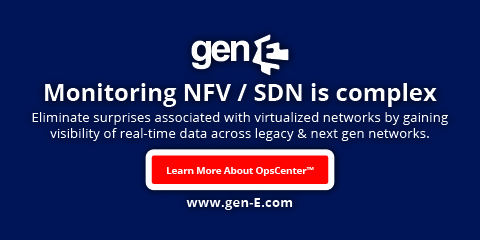CEM, Orchestration and Big Data

There are two approaches to Customer Experience Management getting a lot of attention today. They are End-to-End Orchestration (EEO) and Big Data. Some argue for one over the other as a single complete solution. While, in fact, they both have an important and complementary role to play. Similarly, there are differences of opinion about fully distributed vs. fully centralized solutions. Here again, the correct answer is not “either or” but “both and”. To better understand these complementary relationships we will first briefly explore the relationship between Customer Experience Management (Quality of Experience or QoE) and network Quality of Service Management (QoS). Then we will examine real-time response and pattern mining and how they can work together. In this context, we will look at topology and examine how distributed and centralized approaches complement each other and are driven by external factors. This discussion is a first simplified high-level view.
The Relationship of QoE and Network QoS
QoE management focuses on keeping underlying communications systems (whether virtual – VNF or physical PNF) functioning at a certain level of operational quality. CEM focuses on keeping a service as experienced by an end user functioning at a certain level of customer perceived quality. It is possible for Quality of Experience (QoE) to be high on a set of networks that have low Quality of Service (QoS). In this situation, multiple networks or sub networks, for simplicity let’s call them paths, are employed. As long as the degradation or failure rates of the various paths are statistically independent, and there is an ability to very quickly switch between them, high QoE can be provided even if the QoS of the underlying paths are low.
Of course duplicating or triplicating resources lowers overall efficiency and raises cost. In the short-term, it may be that the cost of poor QoE (customer churn, penalty fees, etc.) may be higher than the cost of lower efficiency. But in the longer term there is generally an incentive to improve efficiency and lower costs.
Orchestration and Real Time Response
Properly constructed and deployed End-to-End orchestration (EEO) insures high QoE. EEO is the way that the various paths are switched in and out quickly enough at the QoE level. To be effective at QoE management, the end-to-end capability is very important because the different paths may involve different domains (RAN, WIFI, Wireline, Fiber, Core, etc.), different vendors, and different administrative units.
Response time is very crucial for QoE. The objective of QoE Management is to provide something akin to traditional fault tolerance with switch-over times fast enough that the end user is either unaware or unconcerned. This goes beyond the simple satisfaction of a Service Level Agreement (SLA). SLA’s are in essence a worst case performance hurdle. QoE’s target is to achieve best case performance. Some people talk of the response time requirement for QoE as “real time”. The concept of real time performance comes from computer operating systems and has to do with such things as non-maskable interrupts. The problem with that, is that there is no good metric for real time in a complex Telco network.





















